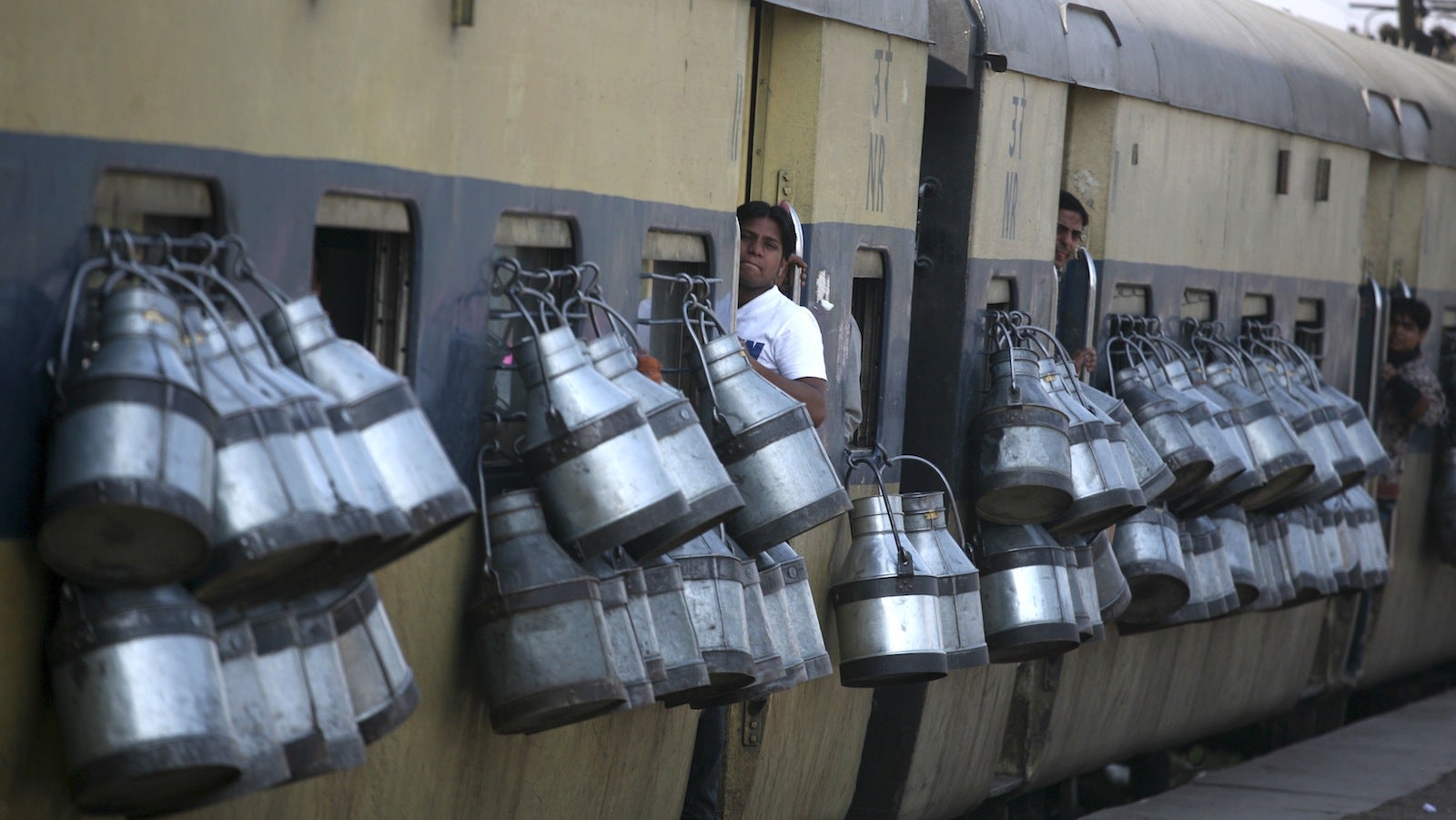Private companies hope to bring order to the chaos of the Indian milk industry
India’s dairy sector has for long been unorganised. Dairy cooperatives and local milk-sellers have always dominated the market.


India’s dairy sector has for long been unorganised. Dairy cooperatives and local milk-sellers have always dominated the market.
Now, private and foreign firms want a bigger share of this $70 billion (Rs4.34 lakh crore) pie. And they have a good reason to eye this sector. India’s dairy industry is expected to double by 2020.
As India’s middle class rises, it is not just the milk consumption that is expected to grow, but also the demand for products such as cheese, butter, yogurt and whey protein.
But despite this forecast, hardly any dairy company owned by a single promoter has made a dent in the sector. Even though India is one of the biggest milk producers in the world, dairy cooperative Amul—operated by the Gujarat Cooperative Milk Marketing Federation—is the only Indian company among the top 20 dairy organisations globally.
India’s chaotic dairy sector has a huge untapped potential. Only 25% of the milk produced by more than 70 million rural households in the country is sold in the organised market, according to a report by India Ratings and Research, a credit rating agency owned by the Fitch group.
This might change soon with private players raising money at an unprecedented rate.
Funding, expansion and new entrants
Private equity players are clearly optimistic about the industry. They have invested $138.85 million (Rs862 crore) in the sector with 15 deals since 2010.
“India’s consumption story and diversification by dairy players into value-added dairy products are drawing interests of investors which have led to surge in the PE deals, ” a report by CARE Ratings said in 2014.
These funds are being used by local private companies to expand and modernise the supply chain and distribution network.
Parag Milk Foods, which sells brands like Gowardhan and Go, is looking to increase its revenue by around 40% in the next two years.
“We will be targeting a revenue of Rs2,100 crore in the next two years, from the current Rs1,500 crore,” Devendra Shah, chairman, Parag Milk Foods, told Quartz.
At present, liquid milk contributes 20% of the company’s topline, which is supplied to cities in Maharashtra and southern India. Now, the company wants to increase its presence in north India, a traditionally high dairy-consuming market.
Maharashtra-based Prabhat Dairy has filed for an IPO to raise about Rs300 crore ($48 million). Right now, only a handful of dairy companies in India are listed.
In the last few years, even international firms have shown interest in the sector. In January 2014, the world’s largest dairy firm Groupe Lactalis SA acquired Hyderabad-based Tirumala Milk Products for Rs1,750 crore ($275 million). Japanese firm Meiji is actively looking to enter India.
Even Indian consumer companies have said they will enter the industry. Mahindra Agribusiness, a unit of the Mahindra & Mahindra conglomerate, said in February that it is looking for a brand acquisition in the dairy sector. Cigarrette-maker ITC said in 2014 that it will set up its first dairy processing plant in Bihar. It has also planned an investment of Rs500 crore in 2015.
However, can these private firms match Amul, one of the world’s largest cooperatives? Experts say the answer is still unknown, but privatisation is required.
“The dairy industry is a largely informal sector, so there is a huge scope for private players, even bigger than what the cooperatives have,” Ankur Bisen, senior vice-president of retail and consumer products at Technopak, a retail consultancy, told Quartz. “There is a very large scope for further growth of value-added milk products in small towns.”
Shah of Parag agrees. According to him, health products such as whey protein might be game changers in the next few years.
“Amul is the pioneer player in the market and the one that brought the white revolution in India. However, with the changing consumer preferences and the evolving palate, there is a growing demand for a wide range of dairy products and niche offering,” Shah said.
“We are not looking at any numbers game with other brands, but focusing on consolidating our market presence and expanding into new regions,” he added.